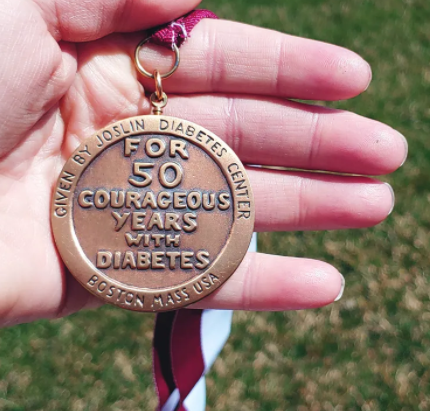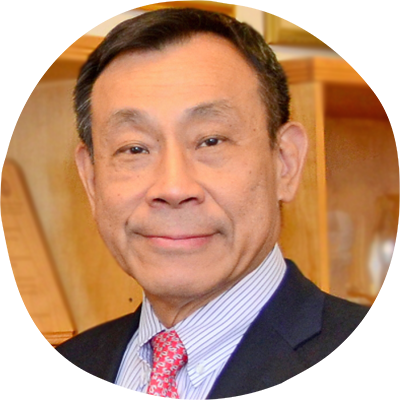FDA Approves Dapagliflozin (Farxiga) for Chronic Kidney Disease was reported by Susan Jeffrey for Medscape.com, 30 April 2021.
 The US Food and Drug Administration (FDA) has approved dapagliflozin (Farxiga, AstraZeneca) to reduce the risk for kidney function decline, kidney failure, cardiovascular death, and hospitalization for heart failure in adult patients with chronic kidney disease (CKD) at risk for disease progression.
The US Food and Drug Administration (FDA) has approved dapagliflozin (Farxiga, AstraZeneca) to reduce the risk for kidney function decline, kidney failure, cardiovascular death, and hospitalization for heart failure in adult patients with chronic kidney disease (CKD) at risk for disease progression.
“Chronic kidney disease is an important public health issue, and there is a significant unmet need for therapies that slow disease progression and improve outcomes,” said Aliza Thompson, MD, deputy director of the Division of Cardiology and Nephrology at the FDA’s Center for Drug Evaluation and Research. “Today’s approval of Farxiga for the treatment of chronic kidney disease is an important step forward in helping people living with kidney disease.”
This new approval in chronic kidney disease was based on results of the DAPA-CKD trial that was stopped early in March 2020 due to efficacy of the treatment. Patients should consider taking a lower dose of insulin or insulin secretagogue to reduce hypoglycemic risk if they are also taking dapagliflozin. Treatment can also cause dehydration, serious urinary tract infections, genital yeast infections, and metabolic acidosis, the announcement said. “Patients should be assessed for their volume status and kidney function before starting Farxiga,” the agency adds.
Read more: FDA Approves Dapagliflozin (Farxiga) for Chronic Kidney Disease
Does Sernova have a cure for Type 1 Diabetes? was discussed by Dean Bristow for InvestorIntel.com, 9 April 2021.
 Sernova is a regenerative medicine therapeutics platform company developing technologies using a medical device and immune protected therapeutic cells (i.e. human donor cells, corrected human cells and stem-cell-derived cells) to improve the treatment and quality of life of people with chronic metabolic diseases such as insulin-dependent diabetes, blood disorders, and other diseases treated through replacement of proteins or hormones missing or in short supply within the body.
Sernova is a regenerative medicine therapeutics platform company developing technologies using a medical device and immune protected therapeutic cells (i.e. human donor cells, corrected human cells and stem-cell-derived cells) to improve the treatment and quality of life of people with chronic metabolic diseases such as insulin-dependent diabetes, blood disorders, and other diseases treated through replacement of proteins or hormones missing or in short supply within the body.
Sernova announced their Cell Pouch System, with success in treating diabetes. Effectively, this is a novel implantable and scalable medical device that forms a natural environment in the body for the housing and long-term survival and function of therapeutic cells. These therapeutic cells release necessary proteins or factors missing from the body to treat chronic diseases as an alternative to daily administration of drugs. On Jan 15, 2021, the company announced positive preliminary safety and efficacy data from the ongoing U.S. Phase I/II Cell Pouch clinical trial for Type-1 Diabetes. In fact, one patient has now been insulin-free (requiring no injectable insulin) for nine months with optimal glucose control.
Read more: Does Sernova have a cure for Type 1 Diabetes?
A New Way of Looking at Beta Cells with Peter Thompson was published by Todd Boudreaux for BeyondType1.org, 21 April 2021.
 Peter Thompson, PhD is an Assistant Professor at the University of Manitoba, and the Principal Investigator at the Thompson Lab, which he founded after researching beta cell regrowth said. “My project really was based on an odd observation that we’ve made. A lot of the previous work that’s been done in this field is focused on the immune system and saying “We know that there are problems with the immune system in Type 1 diabetes. The beta cells are just kind of there. They get destroyed, and that’s the extent of it.”
Peter Thompson, PhD is an Assistant Professor at the University of Manitoba, and the Principal Investigator at the Thompson Lab, which he founded after researching beta cell regrowth said. “My project really was based on an odd observation that we’ve made. A lot of the previous work that’s been done in this field is focused on the immune system and saying “We know that there are problems with the immune system in Type 1 diabetes. The beta cells are just kind of there. They get destroyed, and that’s the extent of it.”
They questioned that a little bit. And there was a lot of resistance to that idea. Not necessarily just to their work, but in general, a lot of resistance, to the idea that beta cells could be doing more than just dying. So, they looked in an animal model of the disease to try to understand what’s actually happening in the beta cells… Are they just dying or is something else going on?
They were quite surprised, initially, that they found beta cells were undergoing a different kind of stress response in addition to what had already been shown in terms of their ability to undergo programmed cell death. They were actually activating a completely different pathway. In this particular new pathway, the beta cells turn on is a pharmacologic target. When the beta cells turn this on, they can actually stop it, and prevent the disease in the animal model.
Read more: A NEW WAY OF LOOKING AT BETA CELLS
Type 1 Diabetes Medalists: How Celebrating Decades of Success Is Changing Treatments was reported by Moira McCarthy for DiabetesMine.com, 21 April 2021.
 It was 1948, just a little more than 25 years after the world first had access to what was then a miracle elixir, insulin. Dr. Elliott P. Joslin, now often referred to as the godfather of all diabetes care, began awarding medals to people who had lived with T1D for 25 years. By 1970, the center had to add 50-year medals to their offerings, since more and more people were living longer lives with diabetes.
It was 1948, just a little more than 25 years after the world first had access to what was then a miracle elixir, insulin. Dr. Elliott P. Joslin, now often referred to as the godfather of all diabetes care, began awarding medals to people who had lived with T1D for 25 years. By 1970, the center had to add 50-year medals to their offerings, since more and more people were living longer lives with diabetes.
Today, the program is still run out of the Joslin clinic and it’s awarded thousands of medals to people worldwide living with many decades of diabetes:
-
- More than 5,000 people with T1Ds have gotten a 50-year medal.
- A total of 90 people have received 75-year medals.
- A total of 22 have received an 80-year medal since the first in 2013, and a notable one is being awarded soon to someone who was diagnosed at only 6 hours old (!) back in 1942.
 Organically, the “Medalists” began communicating, bonding, and sharing tips and experiences. They became a kind of private and personal study and support group for one another. “When I first got [to Joslin as a doctor] I heard rumors that many of the Medalists had no complications,” says Dr. George King, who now serves as Joslin’s director of research. “But then it was just rumor, an anecdote. There was no proof or study to back that up.”
Organically, the “Medalists” began communicating, bonding, and sharing tips and experiences. They became a kind of private and personal study and support group for one another. “When I first got [to Joslin as a doctor] I heard rumors that many of the Medalists had no complications,” says Dr. George King, who now serves as Joslin’s director of research. “But then it was just rumor, an anecdote. There was no proof or study to back that up.”
“Researchers were thinking of looking for risk factors, which we would not find here, and in that way they were right,” he says. “But we wanted to look for protective factors. This was a new concept.”
King says the first big breakthrough came not from something a researcher noticed under a microscope, but from following up on the insistence from the Medalists. “They had been saying for years that they believed they still produced residual insulin,” King says. “No one believed them.” But they insisted that from life experience they could tell they still made insulin here and there. King dug deep, faced more turn-downs and then eventually got the funding needed to study this phenomenon.
The research findings?
“They all are making C-peptide he says, which counters the long-held belief that with T1D, the pancreas no longer produces any insulin at all. In fact, even including those Medalists who’ve had T1D for 80 years, the percentage of people who have some functioning beta cells comes in at a solid 100 percent. “This was a real ‘eureka!’ moment,” says Dr. Sanjoy Dutta, vice president of research at JDRF. “No one even looked at this before because it was just assumed (the beta producing cells of the pancreas) were toast,” he says. “Now we know they still produce residual insulin. Is this a clue to no complications? We still don’t know.”
Once those results were confirmed, an entirely new research consortium was launched: regeneration. “This opened up an entire new field,” Margery Perry, member of JDRF International board of directors said. Today, JDRF not only funds multiple studies on regeneration, but they’ve also formed consortiums of researchers around the world working on that topic.
 The Medalist study also has helped with discoveries — and treatments — for things like eye and kidney damage. New studies are looking at gut microbiota, and a recently completed study found that looking in the eyes can give clues to kidney health, a possible way to get ahead of complications and slow them down or stop them.
The Medalist study also has helped with discoveries — and treatments — for things like eye and kidney damage. New studies are looking at gut microbiota, and a recently completed study found that looking in the eyes can give clues to kidney health, a possible way to get ahead of complications and slow them down or stop them.
There are also things they’ve discovered they had wrong in the past. First, he says, people who had no complications after half a century didn’t have identical diabetes care plans, nor did they have “perfect” control. “From 2005 to 2015, we studied 1,000 people,” he says. “A third of them did not have that so-called ‘great’ control over time (defined as an A1C in the 7.3 to 8.5 range). So clearly, they were protected in other ways, too.” King says that genetic studies showed no uniqueness to pinpoint the reason “something that surprised us. We’ve got more work to do.”
Read more: Type 1 Diabetes Medalists: How Celebrating Decades of Success Is Changing Treatments


Three more years and I will score my 50th medal. I will count it as one of the most inspiring awards i might receive. My aunt lived 3 years, My mom (10 years later) lived 25 years. I am on my way to 50. time, technology and yes a large touch of good luck got me this far Hopefully that luck will hold for a few more years.
rick